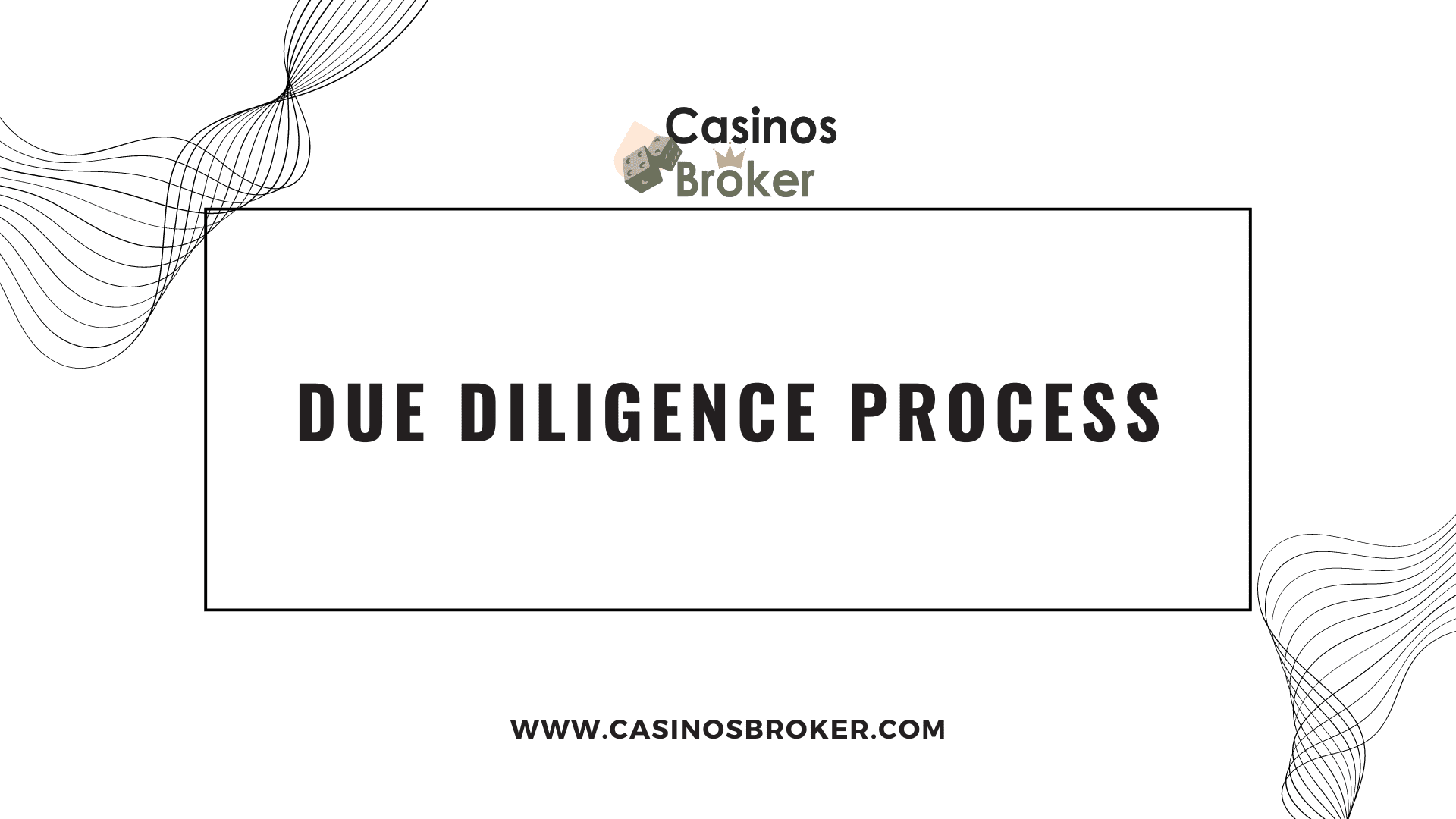The due diligence process in mergers and acquisitions (M&A) involves a comprehensive and systematic examination of a target company to evaluate its business, financial, legal, and operational aspects. This process is crucial for the acquiring company to make an informed decision and mitigate risks associated with the transaction.

Here is a detailed explanation of the due diligence process:
1. Preparation and Planning
Objective Setting
- Definition: Objective setting involves clearly defining the goals and scope of the due diligence process.
- Purpose: This step ensures that the due diligence process is focused and comprehensive. By defining the objectives, the acquiring company can identify the specific areas that need to be examined and the outcomes they aim to achieve.
- Scope: The scope typically includes financial health, legal compliance, operational efficiency, market position, and potential risks.
- Outcome: Clearly defined objectives help in creating a structured approach, allowing for a systematic review of the target company’s various aspects.
Team Formation
- Definition: Team formation involves assembling a multidisciplinary team of professionals with the necessary expertise to conduct due diligence.
- Members: The team usually includes:
- Financial Analysts: To assess financial statements, earnings quality, and financial stability.
- Legal Experts: To review legal documents, contracts, compliance, and potential litigations.
- Industry Specialists: To provide insights into the target company’s market position, competitive landscape, and industry-specific challenges.
- Operational Experts: To evaluate the business model, operations, supply chain, and technology infrastructure.
- Human Resources Professionals: To assess employee structure, compensation, and key personnel.
- Importance: A diverse team ensures that all critical areas of the target company are examined thoroughly, leveraging different perspectives and expertise.
Checklist Development
- Definition: Checklist development involves creating a detailed list of items and areas to be reviewed during the due diligence process.
- Components: The checklist typically includes:
- Financial Statements: Income statements, balance sheets, cash flow statements.
- Contracts and Agreements: Major contracts, leases, partnerships, and ongoing commitments.
- Intellectual Property: Patents, trademarks, copyrights, and related documentation.
- Legal Compliance: Regulatory adherence, ongoing litigations, potential legal issues.
- Operational Aspects: Business model, operational processes, technology systems, supply chain.
- Human Resources: Employee structure, compensation, benefits, key personnel.
- Market Analysis: Market position, competitors, customer base, sales strategies.
- Environmental Compliance: Adherence to environmental regulations, sustainability initiatives.
- Purpose: The checklist serves as a comprehensive guide to ensure that no critical area is overlooked. It provides a structured framework for the due diligence team to follow, making the process efficient and thorough.
- Outcome: A well-developed checklist helps in systematically identifying potential issues, risks, and opportunities within the target company.
By focusing on these three critical components—objective setting, team formation, and checklist development—the preparation and planning stage of the due diligence process lays a solid foundation for a thorough and effective examination of the target company. This stage is crucial for identifying potential risks, validating assumptions, and making informed decisions about the acquisition.
2. Financial Due Diligence
Financial Statements Analysis
- Definition: This involves a thorough examination of the target company’s historical financial statements, including the income statement, balance sheet, and cash flow statement.
- Purpose: The goal is to gain a clear understanding of the company’s financial health and performance over time.
- Income Statements: Assess revenue, expenses, and profitability trends.
- Balance Sheets: Review assets, liabilities, and equity to understand the company’s financial position.
- Cash Flow Statements: Analyze cash inflows and outflows to evaluate liquidity and cash management.
- Outcome: This analysis provides a comprehensive view of the company’s financial stability and operational efficiency, identifying strengths and potential red flags.
Quality of Earnings
- Definition: Quality of earnings assessment focuses on the sustainability and reliability of the reported earnings.
- Purpose: To distinguish between recurring earnings from core operations and one-time gains or unusual accounting practices that could distort true profitability.
- Components:
- Recurring Revenue: Evaluate the consistency of revenue streams.
- Expense Management: Identify any unusual or non-recurring expenses.
- Accounting Practices: Check for aggressive accounting methods that inflate earnings.
- Outcome: This assessment ensures that the earnings are a true reflection of the company’s ongoing operations, providing a realistic view of future profitability.
Working Capital
- Definition: Working capital is the difference between current assets and current liabilities, indicating the company’s short-term financial health and operational efficiency.
- Purpose: To evaluate whether the target company can meet its short-term obligations and manage its day-to-day operations efficiently.
- Components:
- Current Assets: Review cash, inventory, receivables, and other short-term assets.
- Current Liabilities: Assess payables, short-term debt, and other short-term obligations.
- Management Practices: Evaluate how well the company manages its working capital.
- Outcome: This evaluation helps determine if the company has sufficient liquidity to sustain operations and whether its working capital management aligns with the acquiring company’s expectations.
Debt and Liabilities
- Definition: This involves reviewing the target company’s outstanding debts and other liabilities.
- Purpose: To understand the financial obligations that the acquiring company would inherit and assess their impact on future financial performance.
- Components:
- Debt Levels: Analyze the amount and terms of short-term and long-term debt.
- Liabilities: Review other obligations, such as leases, pensions, and contingent liabilities.
- Outcome: A clear understanding of the company’s debt and liabilities helps in assessing financial risk and structuring the acquisition deal appropriately.
Taxation
- Definition: Tax due diligence involves checking the target company’s tax compliance, existing liabilities, and potential tax issues.
- Purpose: To identify any tax risks that could impact the transaction and ensure that the company complies with relevant tax laws.
- Components:
- Tax Compliance: Verify that the company has been compliant with tax regulations.
- Existing Liabilities: Review any outstanding tax liabilities or disputes with tax authorities.
- Potential Issues: Identify any potential tax risks, such as aggressive tax planning strategies that could lead to future liabilities.
- Outcome: Ensuring tax compliance and identifying potential tax issues helps mitigate risks and avoid future financial penalties.
By thoroughly conducting financial due diligence, the acquiring company can gain a detailed understanding of the target’s financial health, identify potential risks, and make informed decisions about the acquisition. This process is critical for validating the target’s financial integrity and ensuring a successful transaction.
3. Legal Due Diligence
Corporate Structure and Governance
- Definition: This step involves examining the organizational structure, shareholder agreements, and governance practices of the target company.
- Purpose: To ensure that the corporate hierarchy is clear and free of hidden complexities or issues that could affect the acquisition.
- Components:
- Organizational Structure: Review the structure to understand the hierarchy and relationships between various entities within the company.
- Shareholder Agreements: Examine agreements among shareholders to identify rights, obligations, and any potential conflicts.
- Governance Practices: Assess the company’s governance practices, including board composition, decision-making processes, and compliance with governance standards.
- Outcome: This examination helps in identifying any structural or governance-related issues that could impact the acquisition, ensuring transparency and alignment with the acquiring company’s expectations.
Contracts and Obligations
- Definition: Reviewing major contracts, agreements, leases, and ongoing commitments of the target company.
- Purpose: To identify any obligations that may affect the acquisition and understand the contractual landscape of the target company.
- Components:
- Major Contracts: Examine significant contracts with customers, suppliers, partners, and other stakeholders.
- Leases: Review lease agreements for property, equipment, and other assets.
- Ongoing Commitments: Identify any long-term commitments that could impact the company’s operations or financial performance.
- Outcome: Understanding these obligations helps in assessing the potential impacts on the acquisition and integrating these commitments into the acquisition strategy.
Litigation and Disputes
- Definition: Identifying any ongoing or potential litigation and legal disputes involving the target company.
- Purpose: To assess the legal risks associated with the acquisition and understand the potential impact of these disputes on the company’s operations and financials.
- Components:
- Ongoing Litigation: Review current legal cases involving the target company.
- Potential Disputes: Identify potential legal issues that could lead to future litigation.
- Legal Risks: Assess the potential financial and reputational impact of these disputes.
- Outcome: Identifying litigation and disputes helps in understanding the legal landscape and preparing for potential risks, ensuring that the acquiring company can mitigate these issues effectively.
Regulatory Compliance
- Definition: Ensuring that the target company complies with all relevant laws and regulations.
- Purpose: To avoid future legal complications and ensure that the target company operates within the legal framework of its industry and jurisdictions.
- Components:
- Industry Regulations: Review compliance with industry-specific regulations and standards.
- General Laws: Ensure adherence to general legal requirements, such as employment laws, environmental regulations, and corporate laws.
- Regulatory Filings: Check for proper and timely regulatory filings and documentation.
- Outcome: Ensuring regulatory compliance helps in avoiding future legal issues and penalties, making the acquisition smoother and reducing legal risks.
By conducting thorough legal due diligence, the acquiring company can identify and assess the legal risks associated with the target company, understand its legal obligations, and ensure compliance with relevant regulations. This process is crucial for mitigating potential legal issues and ensuring a successful acquisition.
4. Operational Due Diligence
Business Model and Operations
- Definition: This step involves a comprehensive analysis of the target company’s business model, operational processes, and key performance indicators (KPIs).
- Purpose: To assess the operational efficiency, scalability, and future potential of the target company.
- Components:
- Business Model: Understand how the target company generates revenue, its value proposition, customer segments, and market strategy.
- Operational Processes: Evaluate the processes involved in delivering products or services, including production, distribution, and customer service.
- KPIs: Review key performance indicators such as revenue growth, profit margins, customer acquisition cost, and operational efficiency metrics.
- Outcome: This analysis helps in determining the strengths and weaknesses of the target’s operations and identifying opportunities for improvement and growth post-acquisition.
Technology and Systems
- Definition: Assessing the target company’s technology infrastructure and systems.
- Purpose: To ensure that the technology in place meets the acquiring company’s standards and can be integrated smoothly into its existing systems.
- Components:
- IT Infrastructure: Review hardware, software, and network systems.
- Business Systems: Assess enterprise resource planning (ERP), customer relationship management (CRM), and other business systems.
- Cybersecurity: Evaluate the security measures in place to protect data and systems.
- Outcome: Ensuring that the technology infrastructure is robust and compatible with the acquiring company’s systems, which is crucial for seamless integration and operational continuity.
Supply Chain and Inventory
- Definition: Reviewing the target company’s supply chain management and inventory levels.
- Purpose: To identify any potential issues or efficiencies in the supply chain that could impact the acquisition.
- Components:
- Supply Chain Management: Evaluate suppliers, procurement processes, logistics, and distribution networks.
- Inventory Levels: Review inventory management practices, stock levels, and turnover rates.
- Vendor Relationships: Assess the strength and reliability of relationships with key suppliers.
- Outcome: Identifying any inefficiencies or risks in the supply chain and ensuring that inventory management practices are optimized, which can improve operational efficiency and reduce costs.
Human Resources
- Definition: Evaluating the target company’s employee structure, key personnel, compensation, and benefits.
- Purpose: To understand the workforce dynamics and ensure that the human resources practices align with the acquiring company’s standards and culture.
- Components:
- Employee Structure: Review the organizational chart, headcount, and roles and responsibilities of employees.
- Key Personnel: Identify key employees critical to the company’s success and assess their retention risk.
- Compensation and Benefits: Evaluate salary structures, incentive plans, and employee benefits.
- Culture and Morale: Assess the company culture and employee morale, which can impact productivity and integration.
- Outcome: Understanding the workforce dynamics helps in planning for smooth integration, retaining key talent, and aligning HR practices with the acquiring company’s policies.
By conducting thorough operational due diligence, the acquiring company can gain a detailed understanding of the target’s business operations, technology infrastructure, supply chain, and human resources. This comprehensive evaluation is crucial for identifying potential synergies, operational risks, and integration opportunities, ultimately contributing to the success of the acquisition.
5. Commercial Due Diligence
Market Analysis
- Definition: Analyzing the target company’s position within its market, its competitors, and its market share.
- Purpose: To assess the target company’s competitive edge and overall market standing.
- Components:
- Market Position: Determine where the target company stands in the market relative to its competitors.
- Competitors: Identify key competitors and analyze their strengths, weaknesses, and market strategies.
- Market Share: Assess the target company’s share of the market and its growth trends.
- Outcome: This analysis provides insights into the competitive landscape and the target company’s ability to maintain or improve its market position, which is crucial for forecasting future performance and potential for growth.
Customer Base
- Definition: Evaluating the target company’s customer base, including customer satisfaction and retention rates.
- Purpose: To gauge the stability and reliability of the target company’s revenue stream.
- Components:
- Customer Demographics: Analyze the demographics and segmentation of the customer base.
- Customer Satisfaction: Assess customer feedback, reviews, and satisfaction levels to understand customer loyalty and potential issues.
- Retention Rates: Review historical data on customer retention to evaluate how well the company retains its customers over time.
- Outcome: Understanding the customer base helps in assessing the reliability of the revenue stream and identifying opportunities to improve customer satisfaction and retention, which are critical for long-term success.
Sales and Marketing
- Definition: Reviewing the target company’s sales strategies, marketing plans, and distribution channels.
- Purpose: To understand the effectiveness of the target’s efforts to reach its market and drive growth.
- Components:
- Sales Strategies: Evaluate the methods and processes used to generate sales, including direct sales, online sales, and other sales channels.
- Marketing Plans: Review marketing campaigns, branding strategies, and promotional activities to understand how the company attracts and retains customers.
- Distribution Channels: Assess the effectiveness and efficiency of the channels through which the company delivers its products or services to the market.
- Outcome: This review provides insights into the target company’s market reach, the effectiveness of its sales and marketing efforts, and its potential for growth. It also helps in identifying any gaps or areas for improvement.
By conducting thorough commercial due diligence, the acquiring company can gain a comprehensive understanding of the target’s market position, customer base, and sales and marketing strategies. This information is crucial for assessing the target company’s potential for growth, identifying opportunities for improvement, and making informed decisions about the acquisition.
6. Environmental Due Diligence
Environmental Compliance
- Definition: Checking whether the target company adheres to environmental regulations and laws.
- Purpose: To ensure that the company is not at risk of future liabilities or penalties due to non-compliance with environmental standards.
- Components:
- Regulatory Adherence: Verify that the target company complies with all relevant local, regional, and national environmental regulations.
- Permits and Licenses: Review all environmental permits and licenses to ensure they are current and valid.
- Environmental Audits: Examine past environmental audits and inspections to identify any past issues or ongoing compliance problems.
- Violation History: Investigate any history of environmental violations, fines, or legal actions against the company.
- Outcome: Ensuring environmental compliance helps in mitigating legal and financial risks, protecting the acquiring company from future liabilities related to environmental issues.
Sustainability Practices
- Definition: Assessing the target company’s sustainability initiatives and the overall environmental impact of its operations.
- Purpose: To understand the company’s commitment to sustainable practices and its impact on the environment, which can affect its reputation and operational efficiency.
- Components:
- Sustainability Initiatives: Evaluate the company’s initiatives to reduce environmental impact, such as energy efficiency programs, waste reduction efforts, and carbon footprint reduction.
- Environmental Impact: Assess the overall impact of the company’s operations on the environment, including resource consumption, emissions, and waste management.
- Corporate Social Responsibility (CSR): Review the company’s CSR policies and practices related to environmental sustainability.
- Reporting and Transparency: Check the transparency and reporting standards of the company regarding its environmental practices and impact.
- Outcome: Understanding sustainability practices helps in assessing the long-term viability and social responsibility of the target company. It also provides insights into potential areas for improvement and alignment with the acquiring company’s sustainability goals.
By conducting thorough environmental due diligence, the acquiring company can identify any potential environmental risks and liabilities, ensure compliance with regulations, and evaluate the sustainability practices of the target company. This process is crucial for mitigating environmental risks, ensuring regulatory compliance, and promoting sustainable business practices in the acquisition.
7. Risk Management and Mitigation
Risk Identification
- Definition: This involves systematically identifying potential risks that could impact the acquisition across various areas such as financial, legal, operational, and others.
- Purpose: To create a comprehensive understanding of the potential challenges and threats associated with the target company, allowing for informed decision-making.
- Components:
- Financial Risks: Assess risks related to financial health, such as revenue instability, high levels of debt, poor cash flow management, and inadequate financial controls.
- Legal Risks: Identify risks arising from ongoing or potential litigation, non-compliance with regulations, intellectual property issues, and contract obligations.
- Operational Risks: Evaluate risks related to the company’s business operations, including supply chain disruptions, technology failures, and inefficiencies in production or service delivery.
- Market Risks: Consider risks associated with market dynamics, such as changes in consumer preferences, increased competition, and market saturation.
- Reputational Risks: Assess risks that could damage the company’s reputation, including negative public perception, poor customer satisfaction, and ethical concerns.
- Strategic Risks: Identify risks related to the strategic direction of the company, such as poor strategic planning, misalignment with market trends, and ineffective leadership.
- Outcome: A comprehensive list of identified risks provides a foundation for developing mitigation strategies and helps prioritize which risks need immediate attention.
Mitigation Strategies
- Definition: Developing and implementing strategies to address and reduce the impact of identified risks before finalizing the acquisition.
- Purpose: To ensure that potential risks are managed effectively, thereby protecting the acquiring company from future challenges and losses.
- Components:
- Financial Mitigation: Implement financial controls, restructure debt, ensure adequate cash reserves, and develop contingency plans for revenue fluctuations.
- Legal Mitigation: Resolve outstanding legal issues, ensure regulatory compliance, secure necessary permits, and review all contracts for potential liabilities.
- Operational Mitigation: Improve operational efficiency through process optimization, invest in technology upgrades, secure reliable suppliers, and enhance quality control measures.
- Market Mitigation: Diversify product offerings, expand into new markets, invest in marketing and customer engagement strategies, and monitor market trends closely.
- Reputational Mitigation: Strengthen corporate governance, enhance customer service, implement robust ethical standards, and engage in positive public relations campaigns.
- Strategic Mitigation: Align the company’s strategic goals with market opportunities, ensure effective leadership, and adapt to changing market conditions through agile strategic planning.
- Outcome: Effective mitigation strategies reduce the likelihood and impact of potential risks, ensuring a smoother and more secure acquisition process.
Detailed Steps in Risk Management and Mitigation
- Risk Identification Process:
- Risk Workshops: Conduct workshops with key stakeholders to brainstorm and identify potential risks.
- Risk Assessments: Utilize risk assessment tools and methodologies, such as SWOT analysis (Strengths, Weaknesses, Opportunities, Threats), to systematically identify risks.
- Risk Register: Develop a risk register to document identified risks, including their nature, potential impact, and likelihood of occurrence.
- Risk Prioritization: Rank risks based on their severity and likelihood to prioritize mitigation efforts.
- Developing Mitigation Strategies:
- Risk Analysis: Perform detailed analysis of high-priority risks to understand their root causes and potential impacts.
- Strategy Formulation: Formulate specific strategies for each identified risk, considering preventive measures, contingency plans, and risk transfer options (e.g., insurance).
- Action Plans: Develop actionable plans with clear steps, responsibilities, and timelines for implementing mitigation strategies.
- Resource Allocation: Allocate necessary resources, including budget, personnel, and technology, to execute mitigation strategies effectively.
- Implementation and Monitoring:
- Execution: Implement the action plans, ensuring that all team members understand their roles and responsibilities.
- Monitoring: Continuously monitor the effectiveness of mitigation strategies through regular reviews and updates to the risk register.
- Reporting: Provide regular reports to senior management on the status of risk management efforts and any changes in the risk landscape.
- Adjustments: Adjust strategies as needed based on feedback, new information, and changing circumstances.
By thoroughly identifying risks and developing robust mitigation strategies, the acquiring company can significantly reduce uncertainties and enhance the likelihood of a successful acquisition. This proactive approach ensures that potential issues are addressed before they become critical problems, thereby protecting the company’s investment and strategic interests.
8. Integration Planning
Cultural Fit
- Definition: Assessing the compatibility of the corporate cultures of the acquiring and target companies.
- Purpose: To ensure that cultural differences do not hinder the integration process and that both companies can work together effectively post-acquisition.
- Components:
- Core Values and Beliefs: Compare the core values and beliefs of both companies to identify commonalities and differences.
- Workplace Practices: Examine day-to-day workplace practices, such as decision-making processes, communication styles, and work-life balance expectations.
- Employee Engagement: Assess levels of employee engagement and morale in both companies.
- Management Styles: Evaluate the management styles and leadership approaches in both organizations.
- Outcome: Understanding cultural fit helps in developing strategies to bridge any cultural gaps, fostering a cohesive and collaborative working environment.
Synergies
- Definition: Identifying areas where the combined entity can achieve greater efficiency or effectiveness than the two companies could separately.
- Purpose: To maximize the benefits of the acquisition by realizing cost savings, revenue enhancements, and other efficiencies.
- Components:
- Operational Synergies: Look for opportunities to streamline operations, reduce redundancy, and improve efficiency.
- Financial Synergies: Identify ways to optimize financial performance, such as through tax benefits, improved cash flow management, or better financing terms.
- Market Synergies: Explore possibilities for expanding market reach, cross-selling products, or leveraging combined brand strength.
- Resource Synergies: Consider how to best utilize combined resources, including technology, human capital, and intellectual property.
- Outcome: Identifying and planning for synergies ensures that the acquiring company can achieve the expected value from the acquisition and realize the anticipated benefits.
Transition Plan
- Definition: Developing a comprehensive plan to manage the transition and integration of the target company into the acquiring company.
- Purpose: To ensure a smooth and seamless merger, minimizing disruption to operations and maintaining business continuity.
- Components:
- Integration Team: Form an integration team responsible for overseeing the transition, comprising members from both companies.
- Timeline and Milestones: Establish a clear timeline with key milestones to track progress and ensure timely completion of integration activities.
- Communication Plan: Develop a communication plan to keep all stakeholders informed about the integration process, addressing concerns and providing updates.
- Systems Integration: Plan for the integration of IT systems, ensuring data compatibility, security, and continuity of operations.
- HR Integration: Manage the integration of human resources, including aligning compensation and benefits, merging organizational structures, and addressing any employee concerns.
- Change Management: Implement change management strategies to help employees adapt to new processes, systems, and organizational structures.
- Outcome: A detailed transition plan ensures that all aspects of the integration are carefully managed, reducing the risk of operational disruption and helping the combined entity achieve its strategic goals.
Detailed Steps in Integration Planning
- Assessing Cultural Fit:
- Surveys and Interviews: Conduct surveys and interviews with employees from both companies to gather insights on cultural aspects.
- Workshops and Meetings: Hold workshops and meetings with key stakeholders to discuss cultural similarities and differences.
- Cultural Assessment Tools: Use cultural assessment tools and frameworks to systematically evaluate cultural alignment.
- Identifying Synergies:
- Operational Analysis: Analyze the operational processes of both companies to identify areas for improvement and efficiency gains.
- Financial Review: Conduct a financial review to identify potential cost savings, revenue opportunities, and financial optimizations.
- Market Research: Perform market research to explore new market opportunities, customer segments, and competitive advantages.
- Resource Assessment: Evaluate the combined resources of both companies to identify areas where they can be leveraged more effectively.
- Developing the Transition Plan:
- Integration Team Formation: Establish an integration team with clear roles and responsibilities for overseeing the integration process.
- Timeline Development: Create a detailed timeline with specific milestones and deadlines for each phase of the integration.
- Communication Strategy: Develop a communication strategy to ensure transparent and consistent communication with all stakeholders.
- Systems Integration Planning: Plan the integration of IT systems, including data migration, system compatibility, and cybersecurity measures.
- HR Integration Planning: Align HR policies, compensation structures, and organizational hierarchies to ensure a smooth transition for employees.
- Change Management Implementation: Develop and implement change management strategies to support employees through the transition, including training programs and support resources.
By thoroughly addressing cultural fit, identifying synergies, and developing a comprehensive transition plan, the acquiring company can ensure a smooth and successful integration process. This approach minimizes disruptions, aligns organizational practices, and maximizes the value of the acquisition, ultimately contributing to the long-term success of the combined entity.
9. Reporting and Decision Making
Due Diligence Report
- Definition: This involves compiling all the findings from the due diligence process into a comprehensive report.
- Purpose: To present a detailed and organized account of all critical insights obtained during the due diligence process, providing a clear picture of the target company.
- Components:
- Executive Summary: A concise overview of the key findings, highlighting major risks and opportunities.
- Financial Analysis: Detailed examination of financial statements, quality of earnings, working capital, debt, liabilities, and tax issues.
- Legal Analysis: Assessment of the corporate structure, contracts, litigation, regulatory compliance, and other legal matters.
- Operational Analysis: Insights into the business model, operations, technology, supply chain, and human resources.
- Commercial Analysis: Evaluation of market position, customer base, sales and marketing strategies.
- Environmental Analysis: Review of environmental compliance and sustainability practices.
- Risk Analysis: Identification of potential risks across various areas and their potential impact.
- Outcome: The due diligence report serves as a comprehensive reference document for the acquiring company, summarizing all critical information in an organized manner.
Recommendations
- Definition: Based on the findings of the due diligence report, providing actionable recommendations to guide the acquiring company.
- Purpose: To offer expert advice on how to address identified issues, capitalize on opportunities, and proceed with the acquisition.
- Components:
- Risk Mitigation Strategies: Specific recommendations on how to manage and mitigate identified risks, including financial, legal, operational, and other risks.
- Operational Improvements: Suggestions for improving operational efficiency, integrating technology, and optimizing supply chain and human resources.
- Strategic Initiatives: Advice on leveraging synergies, expanding market reach, and enhancing competitive positioning.
- Compliance Actions: Steps to ensure regulatory and environmental compliance, resolving any outstanding issues.
- Negotiation Points: Key points to address in negotiations, such as deal structure, pricing adjustments, and terms and conditions.
- Outcome: The recommendations provide a clear path forward, helping the acquiring company make informed decisions and take appropriate actions.
Decision Making
- Definition: Assisting the acquiring company in making a final decision regarding the acquisition based on the due diligence findings and recommendations.
- Purpose: To ensure that the decision to proceed with, modify, or abandon the acquisition is well-informed and strategically sound.
- Components:
- Cost-Benefit Analysis: Weighing the potential benefits of the acquisition against the identified risks and costs.
- Scenario Planning: Considering different scenarios and their potential outcomes, including best-case, worst-case, and most likely scenarios.
- Stakeholder Consultation: Engaging key stakeholders, including executives, board members, and advisors, to gather input and build consensus.
- Final Review: Conducting a thorough review of the due diligence report, recommendations, and all relevant information.
- Go/No-Go Decision: Making the final decision to proceed with the acquisition, renegotiate terms, or abandon the deal based on the comprehensive analysis.
- Outcome: The decision-making process ensures that the acquiring company takes a well-considered and strategic approach, minimizing risks and maximizing the potential for a successful acquisition.
Detailed Steps in Reporting and Decision Making
- Compiling the Due Diligence Report:
- Data Collection: Gather all data and findings from the due diligence process.
- Report Structure: Organize the report into clear sections, ensuring each area of due diligence is covered comprehensively.
- Drafting: Write detailed descriptions and analyses for each section, supported by data and evidence.
- Review and Validation: Review the report for accuracy, completeness, and clarity. Validate findings with subject matter experts.
- Formulating Recommendations:
- Analyzing Findings: Review the key findings to identify major risks, opportunities, and areas needing attention.
- Strategic Alignment: Ensure recommendations align with the acquiring company’s strategic goals and priorities.
- Actionable Steps: Provide specific, actionable steps for addressing issues and capitalizing on opportunities.
- Prioritization: Prioritize recommendations based on their potential impact and urgency.
- Facilitating Decision Making:
- Presenting the Report: Present the due diligence report and recommendations to the acquiring company’s decision-makers in a clear and concise manner.
- Discussion and Analysis: Facilitate discussions among key stakeholders to analyze the findings and recommendations.
- Scenario Planning: Develop and discuss different scenarios and their implications.
- Consultation: Engage with external advisors, such as legal, financial, and industry experts, for additional insights.
- Final Decision: Support the decision-making process with comprehensive analysis and expert advice, leading to a well-informed final decision.
By following these detailed steps, the acquiring company can ensure a thorough and informed decision-making process. This approach minimizes risks, maximizes the value of the acquisition, and enhances the likelihood of a successful integration and long-term success.
10. Post-Due Diligence
Negotiation and Structuring
- Definition: Utilizing the insights gained from the due diligence process to negotiate favorable terms and structure the acquisition deal effectively.
- Purpose: To ensure that the terms of the deal are advantageous to the acquiring company, addressing any risks identified during due diligence and maximizing potential benefits.
- Components:
- Valuation Adjustments: Adjust the valuation of the target company based on due diligence findings, such as financial health, liabilities, and potential risks.
- Deal Terms: Negotiate key deal terms, including price, payment structure, representations and warranties, indemnities, and covenants.
- Risk Allocation: Allocate risks between the buyer and seller through indemnities, escrows, earn-outs, and other mechanisms.
- Contingencies: Establish contingencies based on unresolved issues or potential future risks, ensuring protection for the acquiring company.
- Integration Planning: Incorporate terms that facilitate the integration process, such as transition support from the seller and retention of key employees.
- Outcome: A well-negotiated and structured deal that aligns with the acquiring company’s strategic goals, mitigates risks, and positions the combined entity for success.
Finalization
- Definition: Completing all necessary steps to finalize the acquisition agreement, ensuring that the transaction is executed smoothly and all due diligence insights are considered.
- Purpose: To legally formalize the acquisition and ensure that all terms and conditions are clearly defined and agreed upon by both parties.
- Components:
- Drafting the Agreement: Prepare the acquisition agreement, detailing all terms and conditions, including price, payment structure, representations and warranties, covenants, indemnities, and contingencies.
- Legal Review: Conduct a thorough legal review of the agreement to ensure compliance with relevant laws and regulations and to protect the acquiring company’s interests.
- Stakeholder Approval: Obtain necessary approvals from relevant stakeholders, including boards of directors, shareholders, and regulatory bodies.
- Signatures: Secure signatures from authorized representatives of both the acquiring and target companies to formalize the agreement.
- Closing Conditions: Ensure all closing conditions are met, such as regulatory approvals, financing arrangements, and resolution of any outstanding issues.
- Closing Process: Execute the closing process, including the transfer of funds, issuance of shares, and transfer of ownership and control.
- Outcome: The finalization of the acquisition agreement ensures a legally binding and clearly defined transaction, paving the way for the successful integration of the target company.
Detailed Steps in Post-Due Diligence
- Negotiation and Structuring:
- Review Due Diligence Findings: Analyze the comprehensive due diligence report to identify areas that require negotiation, such as risks, liabilities, and valuation adjustments.
- Formulate Negotiation Strategy: Develop a negotiation strategy that addresses the identified issues and aims to secure favorable terms for the acquiring company.
- Engage in Negotiations: Conduct negotiations with the target company, focusing on key deal terms such as purchase price, payment structure, risk allocation, and contingencies.
- Document Agreements: Document all agreed-upon terms and conditions in a term sheet or letter of intent (LOI), providing a clear framework for the acquisition agreement.
- Legal and Financial Input: Involve legal and financial advisors to ensure that all negotiated terms are feasible, compliant, and financially sound.
- Finalization:
- Draft the Acquisition Agreement: Work with legal counsel to draft the acquisition agreement, ensuring that it accurately reflects all negotiated terms and conditions.
- Conduct Legal Review: Perform a detailed legal review of the draft agreement to ensure that it is legally sound and protects the acquiring company’s interests.
- Secure Approvals: Obtain necessary approvals from boards of directors, shareholders, and regulatory authorities, as required.
- Resolve Closing Conditions: Address and resolve all conditions that must be met before closing, such as regulatory approvals, financing, and any outstanding due diligence issues.
- Execute the Agreement: Arrange for the signing of the acquisition agreement by authorized representatives of both parties.
- Implement Closing Process: Manage the closing process, including the transfer of funds, issuance of shares (if applicable), and transfer of ownership and control.
- Post-Closing Integration: Begin the integration process immediately after closing, following the transition plan developed during due diligence.
By thoroughly negotiating and structuring the deal and ensuring a meticulous finalization process, the acquiring company can secure a favorable and legally sound acquisition agreement. This comprehensive approach minimizes risks, addresses all critical issues, and sets the stage for a successful integration and long-term success of the combined entity.

Key Takeaways from the Due Diligence Process
Thoroughness
- Definition: Due diligence should be exhaustive and comprehensive, covering all relevant areas of the target company.
- Purpose: To ensure that no critical information is overlooked, which could potentially affect the acquisition.
- Components:
- Comprehensive Coverage: Investigate financial, legal, operational, commercial, and environmental aspects.
- Detailed Checklists: Use detailed checklists to ensure all necessary areas are reviewed.
- Multidisciplinary Teams: Involve experts from various fields to cover every aspect thoroughly.
- Outcome: A thorough due diligence process minimizes the risk of surprises post-acquisition and ensures all potential issues are identified and addressed.
Objective Analysis
- Definition: The analysis should be unbiased and based on factual data to provide a clear and accurate picture of the target company.
- Purpose: To ensure that decisions are made based on reliable information rather than assumptions or subjective judgments.
- Components:
- Data-Driven Insights: Base findings on quantitative and qualitative data gathered during due diligence.
- Third-Party Verification: Utilize independent third parties to verify critical information and provide unbiased perspectives.
- Consistent Methodologies: Apply consistent methodologies for evaluating different aspects of the target company.
- Outcome: Objective analysis provides a realistic understanding of the target company’s strengths, weaknesses, opportunities, and risks, leading to more informed decision-making.
Risk Mitigation
- Definition: The due diligence process should focus on identifying potential risks and developing strategies to mitigate them.
- Purpose: To protect the acquiring company’s interests by minimizing the impact of potential risks associated with the acquisition.
- Components:
- Risk Identification: Systematically identify risks in financial, legal, operational, and other areas.
- Risk Analysis: Assess the potential impact and likelihood of identified risks.
- Mitigation Strategies: Develop and implement strategies to address and reduce the impact of these risks.
- Outcome: Effective risk mitigation ensures that the acquiring company is well-prepared to handle potential challenges, thereby safeguarding its investment and enhancing the likelihood of a successful acquisition.
Informed Decision
- Definition: Enable the acquiring company to make a well-informed decision based on comprehensive analysis and insights gathered during due diligence.
- Purpose: To ensure that the final decision regarding the acquisition is based on a thorough understanding of all relevant factors.
- Components:
- Comprehensive Reporting: Compile findings into a detailed due diligence report that presents all critical insights clearly.
- Recommendations: Provide actionable recommendations based on the due diligence findings.
- Stakeholder Engagement: Involve key stakeholders in the decision-making process to ensure all perspectives are considered.
- Scenario Planning: Explore different scenarios and their potential outcomes to inform the decision-making process.
- Outcome: An informed decision reduces the risk of unforeseen issues post-acquisition and increases the likelihood of achieving the desired strategic objectives.
Benefits of Following a Detailed Due Diligence Process
By adhering to a thorough, objective, risk-focused, and informed due diligence process, companies can significantly reduce the risks associated with M&A transactions and enhance the likelihood of a successful acquisition. This process ensures that:
- Critical Information is Uncovered: No important detail is missed, providing a complete picture of the target company.
- Objective Insights are Gained: Decisions are based on reliable, unbiased data and analysis.
- Risks are Managed: Potential risks are identified and addressed proactively, protecting the acquiring company’s interests.
- Strategic Decisions are Informed: The acquiring company can make well-informed decisions that align with its strategic goals and objectives.
By following these key takeaways, companies can navigate the complexities of M&A transactions more effectively, leading to more successful outcomes and the realization of anticipated benefits.
Frequently Asked Questions (FAQ) on the M&A Due Diligence Process
1. Why is analyzing the “Quality of Earnings” necessary if I already have the financial statements?
Financial statements show what a company earned, but the Quality of Earnings analysis shows how sustainable those earnings are. This specific phase distinguishes between recurring revenue from core operations versus one-time gains (like selling a property) or aggressive accounting tactics that artificially inflate numbers. It ensures the profitability you see on paper is a realistic projection of future performance, not just a temporary spike.
2. If Due Diligence uncovers significant red flags, does the deal have to be cancelled?
Not necessarily. While a “No-Go” decision is an option, the findings are often used to restructure the deal. As outlined in the “Post-Due Diligence” phase, you can use these insights to negotiate a lower purchase price (Valuation Adjustment), require the seller to fix specific issues before closing (Pre-Closing Conditions), or add “Indemnities” where the seller agrees to pay for specific future liabilities if they occur.
3. Why is “Cultural Fit” included in the due diligence process?
Cultural Due Diligence is critical because incompatibility is a leading cause of post-merger failure. Even if the financials align, a clash in management styles, decision-making processes, or work-life balance expectations can lead to a mass exodus of key talent and a drop in productivity. Assessing cultural fit early allows the acquiring company to develop a “Transition Plan” to bridge these gaps and retain the human capital that drives the business.
4. What is the difference between Commercial and Operational Due Diligence?
-
Commercial Due Diligence looks outward: It analyzes the market, competitors, customer satisfaction, and the company’s position within its industry.
-
Operational Due Diligence looks inward: It evaluates the internal machinery of the business, including supply chains, technology infrastructure, manufacturing processes, and IT systems to ensure the business is scalable and efficient.
5. How does Environmental Due Diligence protect the buyer?
Environmental regulations often carry strict “strict liability” clauses, meaning a new owner can be held responsible for pollution caused by the previous owner. Environmental Due Diligence investigates past violations, permits, and sustainability practices. This protects the buyer from inheriting massive legal fines, cleanup costs, or reputational damage related to the target company’s environmental footprint.





